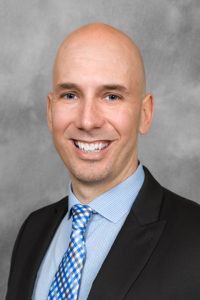By Jamie Javorsky
Many companies still have critical needs that they need to hire for, so companies are having to pivot and learn how to hire remotely. With that said, it is imperative to create and execute a well-crafted interview process.

Now that you have decided to hire remotely, how will you do it? First, assuming your traditional in-person interview process is working, it would be wise to stick to that same process while now utilizing technology to bridge the gap of not being able to physically meet candidates.
Embrace the Process
Making a hiring decision without ever physically meeting the person you are interviewing can be an unsettling experience. But this is our current situation, and if the position is a critical need to move a project forward then there really isn’t a choice. Under current conditions, companies have adapted to this alternative way of onboarding top talent which can pave the way for future hiring needs.
The Advantages
Now that you have decided to move forward and hire remotely we can discuss the good news as there are some hidden advantages. Often times under normal circumstances the scheduling can be a challenge. The candidate doesn’t want to lose the job he has while interviewing for the job he wants, and he might have a hawk of a boss watching his every move. When interviewing remotely, they can have a lot more flexibility as to their available times, which can save the interviewer from doing those dreaded 7:30 a.m. or 6 p.m. interviews.
Also, with the use of technology you can have two interviewers whom might be sitting in different parts of the world interview the candidate at the same time. One final advantage is instead of having a candidate come in and spend a half day to interview with multiple people, you can better stagger the times so that the candidate isn’t waiting around when one of the other interviews inevitably runs over their allotted time.
The Basics
It should go without saying but it is important to follow the same guidelines that we expect from candidates:
Tell the candidate in advance how much time they should allot for the interview.
It is a good idea to make sure your cell phone/emails are off so that you don’t become distracted while interviewing the candidate. You wouldn’t look at your phone in an in person interview, so you shouldn’t do it during a video one.
Be on time. Candidates can be quickly put off by a late interviewer. Start by giving the candidate a warm smile, direct eye contact, and try to put the candidate at ease by taking the first few minutes to build rapport.
Have your questions planned out just as you would in a traditional interview.
Make sure you are comfortable “selling” the candidate (via video) on why your company is the place that they should want to work for. This is a lot different than when you can walk them around a well-appointed office space or more importantly see and feel the company culture. Any good company prides their company culture as a top reason to join. Since the candidate won’t be able to see these things firsthand, make sure to spend extra time discussing these important topics.
Many hiring executives will be doing the hiring from a home, so it is important to show the candidate the proper respect and make sure to do the interview in a quiet place without distractions. It can very distracting for the candidate to answer questions while a child or dog is running around in the background. It can make them lose their train of thought, and you might think they were ill prepared when in reality you were the cause.
It is critical to take detailed notes on the candidate’s responses. This is imperative as this will be a critical way of sharing the answers with other team members who will be a part of the interview/decision making process.
Technology is your friend
Interviewing and hiring candidates remotely can be a new opportunity to enhance your interview process. Start by researching and choosing a video conferencing tool, and do a few dry runs with current team members to work out any potential embarrassing technology glitches. Remember, an interview is a two way street. Candidates can be put off if it appears a company does not have a handle on basic technology needs. With that said, it is wise for both parties to have direct phone numbers prior to the video conferencing in case of technical difficulties.
For highly technical positions such as programmers, it might be best to utilize a screen sharing service just to ensure that the person is able to do what they say they can. Or you might want to tell the candidate in advance to have a whiteboard or paper ready so that you can see them work through technical questions.
A little test that that seems to work well is to give the candidate specific instructions, and have them initiate the interview at the scheduled time. This is an easy way of ensuring that they are detail oriented and have read and are able to follow basic instructions. Part of this should be the inclusion of providing the candidate an itinerary of the people they will be interviewing with in advance. This will help them tailor their conversations towards their audience but will also provide another test to see if they have taken the time to research the people they will be speaking with.
The next part is a little more challenging to get a measure on remotely: body language/eye contact/facial expressions. With that said, pay attention to the candidate’s body language. When you asked them a challenging question, did they fidget in their seat? Or look away? Lastly, due to the nature of video conferencing, are they paying attention to your verbal cues? Meaning, are they talking over the interviewer or not listening to the entire question before answering.
Wrapping up
In a traditional interview, there is often an easy transition to the conclusion. During video interviewing, it is still nice to allow for time for the candidate to ask any questions they might have. Make sure as you are finishing with the candidate that you thank them for their time and also give them some sort of expectation as to what the next steps will be or when they might hear back.
Hiring candidates via video conferencing is inherently different than traditional interviewing, but it does not have to be any more difficult. In fact, if done correctly can speed up the process.
Jamie Javorsky is senior vice president of South Florida Technology for StevenDouglas, a leading national search and interim resources firm, identifying top talent since 1984. He may be reached at (561) 870-8761 or jjavorsky@stevendouglas.com.















